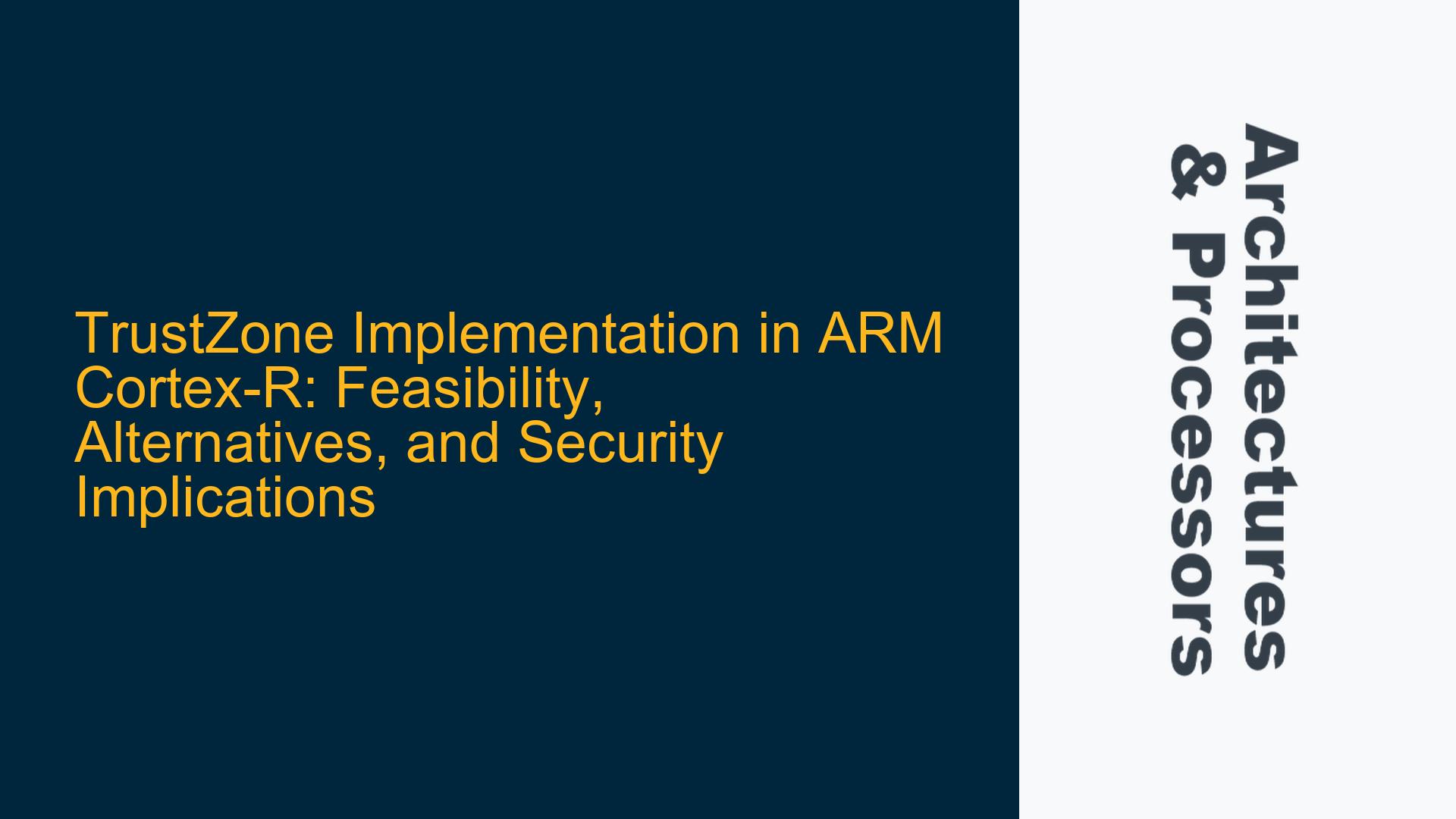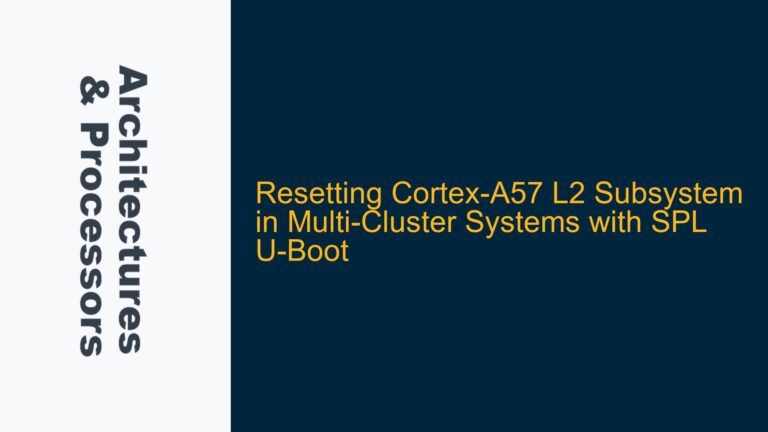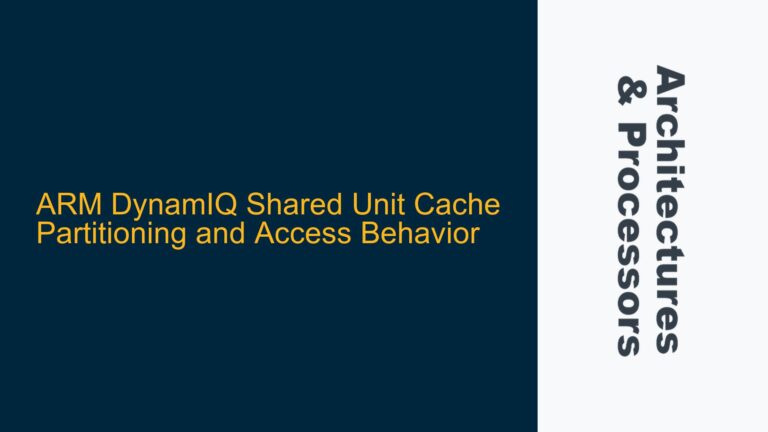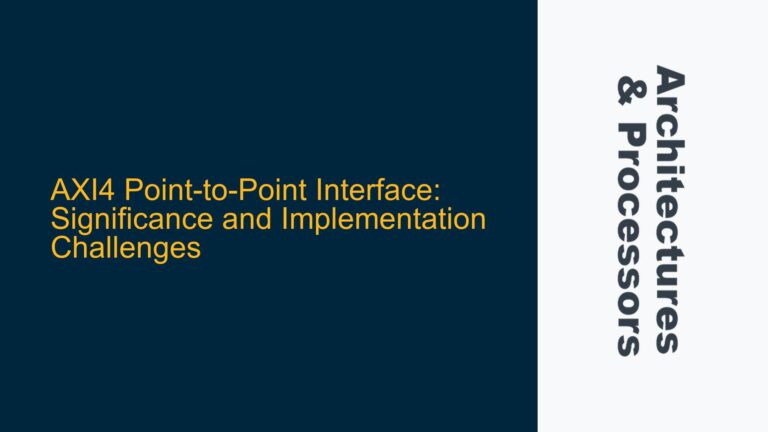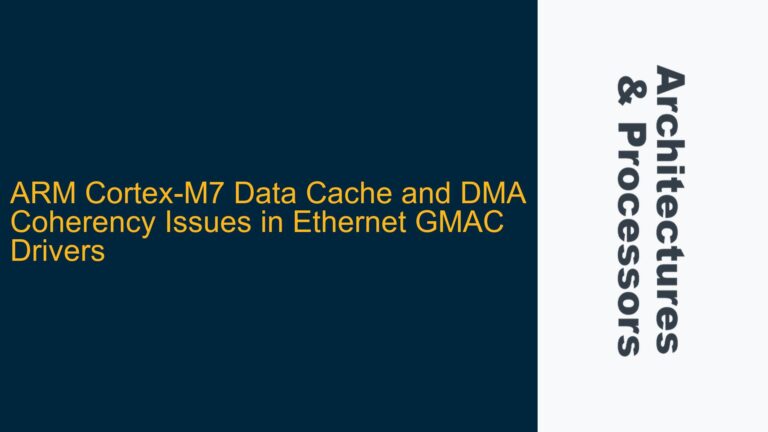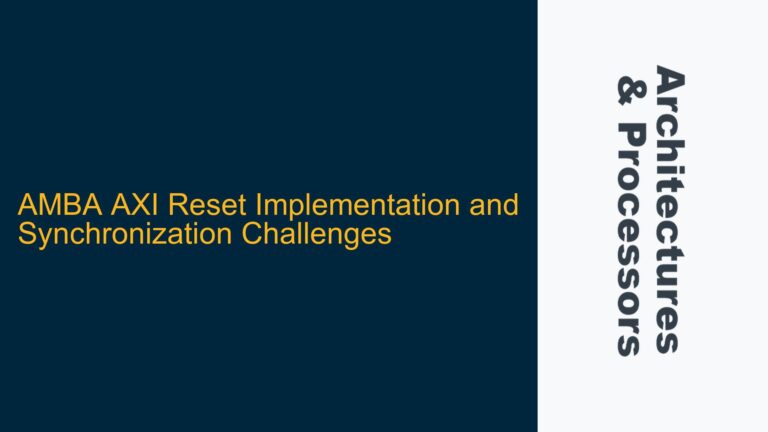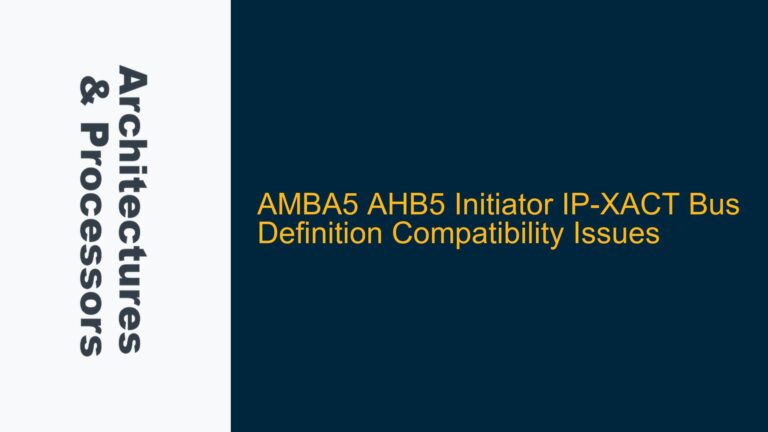ARM Cortex-R Security Requirements and TrustZone Feasibility
The ARM Cortex-R series is designed for real-time applications, where deterministic performance and reliability are paramount. These processors are commonly used in automotive, industrial, and safety-critical systems. The discussion around TrustZone implementation in Cortex-R processors stems from the need for robust security mechanisms in these environments. TrustZone, a hardware-based security feature available in ARM Cortex-A and Cortex-M processors, provides a secure world and a normal world, isolating sensitive operations from the rest of the system. However, Cortex-R processors traditionally rely on different security mechanisms, such as hypervisor (hyp) mode and Memory Protection Units (MPUs), to achieve similar isolation.
The primary question is whether TrustZone’s hardware-level isolation is necessary or feasible for Cortex-R processors. TrustZone operates at the chip level, creating a secure environment that is physically separated from the normal world. This separation is achieved through hardware-enforced boundaries, which are more robust than software-based solutions. In contrast, Cortex-R processors use hyp mode, which is a virtualization feature that allows multiple operating systems or software environments to run concurrently, isolated by a hypervisor. While hyp mode provides strong isolation, it is not as stringent as TrustZone’s hardware-based separation.
The feasibility of implementing TrustZone in Cortex-R processors depends on several factors. First, the architectural differences between Cortex-R and Cortex-A/M processors must be considered. Cortex-R processors are optimized for real-time performance, with features like low-latency interrupt handling and deterministic execution. Adding TrustZone would require significant changes to the processor’s architecture, potentially impacting these real-time characteristics. Second, the use case for TrustZone in Cortex-R processors must be evaluated. In many real-time systems, the security requirements can be met with hyp mode and MPUs, making TrustZone unnecessary. However, in scenarios where hardware-level isolation is critical, such as in automotive safety systems or industrial control systems, TrustZone could provide additional security benefits.
Hypervisor Mode and MPUs as Alternatives to TrustZone in Cortex-R
In the absence of TrustZone, Cortex-R processors rely on hyp mode and MPUs to achieve security and isolation. Hyp mode, part of the ARMv8-R architecture, allows for the creation of virtual machines (VMs) that are isolated from each other. The hypervisor manages these VMs, ensuring that they do not interfere with each other. This approach is similar to TrustZone’s secure and normal worlds but is implemented at the software level rather than the hardware level. While hyp mode provides strong isolation, it introduces additional software overhead, which can impact performance in real-time systems.
MPUs complement hyp mode by providing memory protection. MPUs allow developers to define memory regions with specific access permissions, preventing unauthorized access to critical data. When used in conjunction with hyp mode, MPUs can create a secure environment that is isolated from the rest of the system. However, MPUs are not as robust as TrustZone’s hardware-based isolation. For example, MPUs do not provide the same level of protection against side-channel attacks or hardware tampering.
The combination of hyp mode and MPUs can meet the security requirements of many real-time systems. However, there are scenarios where TrustZone’s hardware-level isolation would be advantageous. For example, in automotive systems, TrustZone could be used to isolate safety-critical functions from non-critical functions, ensuring that a failure in one area does not compromise the entire system. Similarly, in industrial control systems, TrustZone could provide additional protection against cyberattacks, which are becoming increasingly common in these environments.
Evaluating the Need for TrustZone in Cortex-R Processors
The decision to implement TrustZone in Cortex-R processors ultimately depends on the specific security requirements of the target application. In many cases, hyp mode and MPUs provide sufficient isolation, making TrustZone unnecessary. However, in applications where hardware-level isolation is critical, TrustZone could offer significant benefits. For example, in automotive systems, TrustZone could be used to isolate safety-critical functions, such as braking and steering, from non-critical functions, such as infotainment. This would ensure that a failure in the infotainment system does not compromise the safety of the vehicle.
In industrial control systems, TrustZone could provide additional protection against cyberattacks. These systems are increasingly connected to the internet, making them vulnerable to remote attacks. TrustZone’s hardware-level isolation could prevent attackers from gaining access to critical control functions, even if they compromise other parts of the system. Additionally, TrustZone could be used to secure firmware updates, ensuring that only authorized updates are installed.
While TrustZone offers significant security benefits, its implementation in Cortex-R processors is not without challenges. The architectural differences between Cortex-R and Cortex-A/M processors would require significant changes to the Cortex-R architecture. Additionally, the real-time performance requirements of Cortex-R processors could be impacted by the additional hardware required for TrustZone. These factors must be carefully considered when evaluating the need for TrustZone in Cortex-R processors.
In conclusion, while TrustZone is not currently available in Cortex-R processors, the combination of hyp mode and MPUs provides a robust security solution for many real-time applications. However, in scenarios where hardware-level isolation is critical, TrustZone could offer significant benefits. The decision to implement TrustZone in Cortex-R processors will depend on the specific security requirements of the target application, as well as the potential impact on real-time performance. As the demand for secure real-time systems continues to grow, it is possible that future iterations of Cortex-R processors may incorporate TrustZone or similar hardware-based security features. Until then, developers must rely on hyp mode and MPUs to achieve the necessary level of security and isolation.
